Pension Plans in Canada: A Guide for Millennials
Table of Contents
ToggleCompany pensions in Canada seem to be harder and harder to find, but did you know that 38% of Canadian employees participate in an employer-sponsored retirement plan, according to StatsCan (2022)? Today we will talk about what pension plans Canada has available through employer sponsored programs.
Welcome to this exciting intro to the world of Canadian workplace pensions. You probably have never considered the words pension and exciting in the same sentence, but if you stick to the end of this article, I’m sure you will start using them together as well!
Almost 40% of Canadians have the great fortune of building up their retirement nest egg through a pension plan. Employer-sponsored retirement programs can include Defined Benefit Pension Plans, Defined Contribution Benefit Plans, Hybrid Pension Plans, and Group RSPs.
Your retirement savings includes your personal savings, government pension programs like CPP (Or QPP) and OAS, and if you’re lucky, also an employer-sponsored pension plan or Group RSP.
Fee-based Financial Planner Joe Curry joins me from Retirement Planning Simplified to give you insights on how pensions work in Canada and what you need to know!
Millennials and Pensions
While Baby Boomers came to expect a pension and job security, many Millennials and Gen Z’s have difficulty breaking down what it means to have a pension. If you are one of the lucky ones enrolled in one of these plans, you may be thinking – How does my pension impact my retirement, how much will my pension cover, and what the heck are company pensions in Canada?
As a public sector employee myself, I have been enrolled in employer-sponsored retirement plans for over 15 years. How my pension affects my retirement savings needs was always a mystery until I started investigating, attending information sessions, and hired an advice-only Financial Planner to help me figure it out!
Strap in because you are just about to dive deep into all things Canadian Pensions! I am here to help you understand what it means to have a workplace pension in Canada, as well as the most important things you need to know about it!

What the Heck Are Pensions, Anyway?
Employer pension plans in Canada are investment accounts that you and your employer contribute to. This investment will provide you with regular income throughout your retirement – Sweet! How much you will receive depends on several factors, such as the type of plan you are enrolled in, how long you have been contributing, and more.
Pensions (or Registered Pension Plans – a.k.a. RPPs) such as Defined Contribution or Defined Benefit plans are most often associated with public sector employers and unionized workplaces. Private companies may offer Group RSPs to their employees as a benefit. All of these options involve the employer collaboratively contributing to your retirement savings! That’s almost like FREE MONEY! Except it is a part of your total compensation. So be sure you are not leaving that money on the table by delaying enrollment in your plan! If you aren’t sure what your workplace provides, you need to inquire now and learn how to take advantage of these fantastic benefits.
Pensions are a vital part of retirement savings for many Canadians! Most Canadians will plan on retiring with a mix of their savings and investment accounts and public pensions like CPP/QPP and OAS. In addition, those with company pensions in Canada gain the advantage of employer contribution matching, which can accelerate their retirement savings and ensure they receive consistent income in retirement.
Joe Curry tells us, “Pension plans are an incredible benefit many Canadians will never receive. If you are lucky enough to participate in one of these plans, take the time to understand what the pension will provide for you. While they are a great benefit, for many people, they will not be enough to fund their retirement lifestyle fully.”
The Golden Handcuffs
The term Golden Handcuffs refers to receiving employment benefits that are so enticing that you don’t want to leave your workplace (until retirement). A robust pension is the ultimate example of golden handcuffs. After speaking with my financial planner and comparing scenarios where I stayed in my pensioned role or left the pension program and my employer for other work, the amount I would have to save to make up for the loss of pension personally was a disincentive for me to leave my employer.
Whether the incentive/disincentive is enough for you is a personal decision you will have to make. Discussing these decisions with family or a financial planner is a great way to determine what it would mean for you and your retirement planning. You should consult an advice-only or fee-based financial planner who can help you with a financial plan.
Types of Pension Plans in Canada
You may have a pension – but what do you actually know about it? There are a lot of details and terminology that are important to learn when it comes to pensions! First and foremost, you need to figure out the type of pension plan you have. Regarding formal employer-sponsored pensions in Canada, there are three common types: Defined Benefit, Defined Contribution and hybrid pension plans.
Defined Benefit
What is a Defined Benefit Pension Plan?
A DB Pension, as it is commonly known, is a pension plan that promises a specific and predetermined retirement benefit to its enrolled members. That means you know exactly how much money you will get from the month you retire until you die. Your payments are guaranteed. Typically, it’s based on a complicated formula considering factors like years of service and final average salary.
Guaranteed Retirement Income: One of the critical features of a DB pension plan is that it provides a guaranteed and predictable retirement income. Employees can generally calculate their future pension benefits with a high degree of certainty, which can be reassuring for retirement planning.
The great thing about planning with Defined Benefit plans is their exactness. You can work out exactly how much you may need to save for retirement in addition to your pension by doing some simple calculations. To find out how much you need to save, you first need to estimate your post-retirement spending goals and expenses. Then, you calculate your DB plan benefits + CPP + OAS to identify the amount you need to fill with personal retirement savings.
Employers are primarily responsible for funding and managing DB pension plans. They contribute funds to the plan on behalf of employees, invest those funds, and assume the investment risk. If the plan’s investments underperform, it’s the employer’s responsibility to make up the difference to ensure that promised benefits are paid.
Fee-Based Financial Planner Joe Curry from Retirement Planning Simplified states that “typically, both employer and employee contribute to DB plans. The employer must fund at least half of the contributions in a given year, though they can fund more than half, or all the contributions if they choose to do so. But any shortfall in funding is on the employer.”
Unlike defined contribution (DC) plans, DB plans do not have individual accounts for each participant. Instead, the employer maintains a collective pool of assets to fund all future pension payments.
When employees retire, they typically have several options for receiving their DB pension benefits. You could choose from receiving a monthly pension for life, choosing a joint and survivor option to provide benefits to a surviving spouse, or going for a lump-sum payout.
Many DB plans have vesting periods, which means you need to work for a certain number of years before you become eligible for the full pension benefit. In some cases, employees who leave the company before retirement may have the option to transfer the commuted value of their pension to another registered pension plan or to their personal accounts.
Joe advises that “when transferring the commuted value to a personal retirement account, depending on the plan specifics, all or a portion will go to a locked-in retirement account. This account will act like an RRSP but, in most cases, cannot be accessed until at least age 55. Anything that exceeds what can be transferred into the locked-in retirement account will be paid in cash. This is taxable, but if you have RRSP deduction room available, it can go to your RRSP and the taxes will be offset by the RRSP deduction.”
DB pension plans can face funding challenges if investment returns fall short of expectations or plan demographics change (e.g., a higher number of retirees relative to active employees). The risk is on the employer to increase or make additional contributions to meet their obligations to plan members.
Defined benefit pensions are the top-of-the-tops when it comes to retirement plans because they provide retirees with a predictable and secure stream of income in retirement. However, they are becoming less common due to the financial burden they can place on employers. Many employers have shifted to defined contribution plans to transfer investment risk to employees.
If you have a DB pension plan, it’s essential to understand its terms, the calculation of benefits, and your options upon retirement.

Defined Contribution
What is a Defined Contribution Pension plan?
A defined contribution (DC) pension plan is a type of employer-sponsored retirement plan where both you and your employer make contributions to individual accounts, and the eventual retirement benefit you receive depends on the performance of those contributions and any investment gains or losses. You will have a rough idea of what you might get in retirement, but there is no guarantee of the exact amount, unlike in a DB plan. Outcomes can vary significantly depending on your chosen investment mix in the plan.
In a DC pension plan, members maintain the accounts that the employer and employee contribute to. Typically, the money is kept separate from the company’s financials. Participants in a DC pension plan may have control over investment decisions. They can normally choose from various investment options such as stocks, bonds, mutual funds, or other investment vehicles. The ball is in your court here.
One advantage of DC plans is portability. If an employee leaves their job or changes employers, they can often roll over the balance of their DC account into another retirement account like a Locked-In Retirement Account (LIRA). Therefore, participants control their retirement savings even if they change jobs.
Participants in DC plans are typically fully vested in their contributions right away. However, employer contributions may have a vesting schedule, meaning participants may need to work for a certain number of years to become entitled to the employer’s contributions.
One key feature of DC plans is that it is the participants that bear the investment risk. The performance of investments within the account can lead to gains or losses, which can impact the size of the retirement nest egg.
Joe’s advice is to “Take the time to properly allocate your DC pension or Group RRSP investment mix. Research shows that investment outcomes are 90%+ determined by asset allocation (your investment mix), but most people just accept the default portfolio in their plan. Get help from your pension department or an advisor to ensure an optimal allocation.”
Defined contribution pension plans are becoming increasingly common, allowing employers to shift some of the financial risk and responsibility for retirement planning onto employees.
Participants in DC plans must actively manage their investments and contributions to ensure they are on track to meet their retirement goals. It’s also important to periodically review and adjust investment strategies as retirement approaches to manage risk and generate a reliable income stream in retirement.
When planning for retirement, Joe Curry says that “people with DC plans do not take their retirement planning seriously enough thinking, “I have a pension I will be fine.” For most people, their DC pension will not be enough to fund their retirement.”
Hybrid Pensions
A hybrid pension plan is a mix of both types of accounts. You are getting a little bit of column A (or DB) and a little bit of column B (or DC). Hybrid company pensions in Canada act like a DB plan in that the employer is managing the investments, they often guarantee a minimum payment plus potential upside if the account performs well. This type of plan can also be trickier to calculate what you need to save because, like DC pension plans, the benefit is not fully pre-determined.
Group RSP
A Group RSP is a retirement plan that an employer offers to benefit employees. You probably have one or know what an individual RRSP is. Your employer oversees a Group RSP on a group basis, and it has some similar features to the personal RRSP. Group RSP’s are often voluntary to enroll in, while Pensions are usually mandatory.
You contribute with pre-tax dollars, and the deductions come from your paycheque. The CRA counts your contributions against your RRSP contribution limit. Your employer will likely provide contribution matching up to a pre-set limit. Group RSPs may offer the option to make decisions about investment options. Group RSPs are not the focus of this article, but you can learn more here.
Joe shares that “It is critical to make sure you enroll in your pension or Group RRSP programs. It seems obvious, but I have seen it countless times where people just have not gotten around to it and are leaving 100’s of dollars on the table each month.” You don’t want to make this mistake!
Enrolling and Contributing
How to join company pensions in Canada
So many people are focused only on their salary when considering a new position. When considering taking any offer of employment, one of the first things you should do is fully understand the total compensation package, including benefits and pension information.
It may seem awkward to ask about retirement benefits before you have even started working somewhere. Still, it is a part of your benefits package and something employers often use to entice workers to join and stay at their organization, so there is nothing awkward about discussing it upfront.
As millennials and younger generations get more used to job hopping and doing whatever they can to increase their salary quickly. Focusing on the benefits a pension can provide is usually last on the list. But here is why it shouldn’t be overlooked: Being a member of a pension plan where you receive an employer match on your contributions can SIGNIFICANTLY reduce the money you need to save and invest for retirement. Employer match is the gasoline on the fire that speeds up your path to a stress-free retirement.
Contributions: The bucks you and your boss throw into your retirement pot.
The match limit
In a pension plan, your employer also contributes toward your retirement. It is common for employers to match up to 100% of your contributions on the first 4-6% of your salary. For instance, an employee with a 100k salary whose employer offers a 5% match will get $5,000 from the employer if they contribute $5,000. On average, a general employer match is about 4-6% of your total salary.
Voluntary additional contributions
Your workplace may let you make voluntary additional contributions to your pension. Why should you make additional voluntary contributions? Firstly, it’s a contribution you make with your pre-tax dollars. It can help you boost your retirement savings, and it is additional investing that the employer will manage.
If you are comfortable with DIY investing, consider whether it is more beneficial to invest these additional contributions independently. It is unlikely that the employer would match additional contributions.
Pension buy-backs/ service buy-backs
Buying back pension contributions can be a smart financial move in certain situations. Buying back pension contributions should be based on individual circumstances and financial goals.
You are using this to “purchase a period of prior service to increase your pensionable service.“ You are essentially buying more time in the pension program.
You may want to buy back service if you went on a leave and were not contributing during that time (such as a maternity/paternity leave or other extended leave of absence). You may be a part-time employee and want to get the service time credited equivalent to full-time.
Alternatively, you are considering retiring early and want to add more pensionable service to the plan to give yourself a higher post-retirement payout.
Buying back service can mean a higher pension benefit on retirement and an earlier retirement timeline for you! Connect with your pension office to confirm if the employer match is available with a buyback.
According to Modern Advisor Blog, you can use Cash or RRSP transfer to buy back your service with your employer.
Before deciding to buy back pension contributions, it’s crucial to conduct a cost-benefit analysis. Compare the cost of buying back the service with the potential increase in pension benefits it would provide.
Consult with a financial advisor or pension specialist who can help you make an informed decision based on your unique circumstances and the specific rules of your pension plan. Remember that pension buybacks are not always the best financial choice for everyone, so consider your long-term financial goals and retirement plans carefully.

Other Considerations
Early Retirement
When you have a pension, and you are thinking about potential early retirement, you need to evaluate carefully. It involves more than just what you have saved or invested. Early retirement can reduce your monthly pension benefits and have a significant impact on your post-retirement income.
Your employer may have a pension calculator or data table which can give you estimates by year of how much pension you would receive were you to retire at any given time.
What happens if I leave my employer?
If you leave your employer before retirement, you may need to decide. You either leave your pension with the employer and have them pay you a monthly amount when you retire or take the commuted value of the pension and transfer it to a locked-in account.
Commuted Value is the lump-sum value of a pension that can be transferred to another retirement account when leaving an employer before retirement. It represents the present value of future pension payments.
An additional option could be transferring your pension to your new employer’s pension program if they have one and they accept the transfer.
For DC Plan holders, it is quite a simple step – If you decide to take your pension, “The full market value of your entitlement can be transferred to a personal LIRA”
If you are a member of a DB plan, it gets more complex. You can move your pension value to a LIRA, but there is a maximum transfer value, and any amount beyond that needs to be taken out in cash and, therefore, becomes taxable.
That happened to me when I changed employers after completing my MBA. I was able to transfer the majority of my pension value to my new employer, but I did get a cash payout for the portion above the maximum transfer value, which I was able to contribute to my personal RRSP.
Questions to ask your employer
If you have read all this and still need clarification, let me guide you on questions to ask your employer about your pension.
- What kind of pension program do you offer?
- When are the annual pension statements available, and how do I access them?
- Is there a cost of living increase with the pension payments?
- Is the pension indexed to inflation?
- What kind of additional post-retirement benefits am I eligible for?
- When am I eligible to enroll in the pension program?
- What is the vesting period, if any?
- How much will be deducted from my paycheque each month?
- Up to what percent of my salary does the employer match?
- What decisions do I need to make about the pension or investments within them?
- Do you provide any retirement calculators to help me plan my retirement?
- Do you provide any education or training sessions around understanding our pension program?
- What are my pension options if I leave the organization later before retiring?
- Other than pension payments, are there any other benefits retirees are entitled to?
Make those retirement dreams come true.
I hope this article has inspired you to take your retirement education to the next level. Contact your employer’s benefits department to enroll, ask questions, and learn more!
Reach out to a fee-based financial planner to help you make a plan and run your numbers.
Thanks to Joe Curry from Retirement Planning Simplified for contributing to this article! It’s always great to have expert advice from a Financial Planner focused on making your retirement planning easier and more understandable! If you’d like to learn more about planning for your retirement, You can Download the FREE Retirement Navigator.
More from the blog...

Why Wealthsimple Could Be the…
Wealthsimple Banking Review 2025: Best No-Fee Bank in Canada
Read More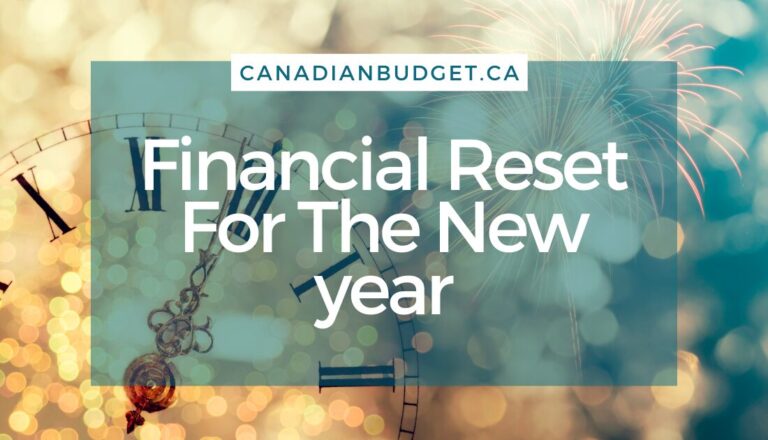
Financial Reset For The New…
How to Do a Financial Reset for the New YearAs the new year begins, it's the perfect time to take...
Read More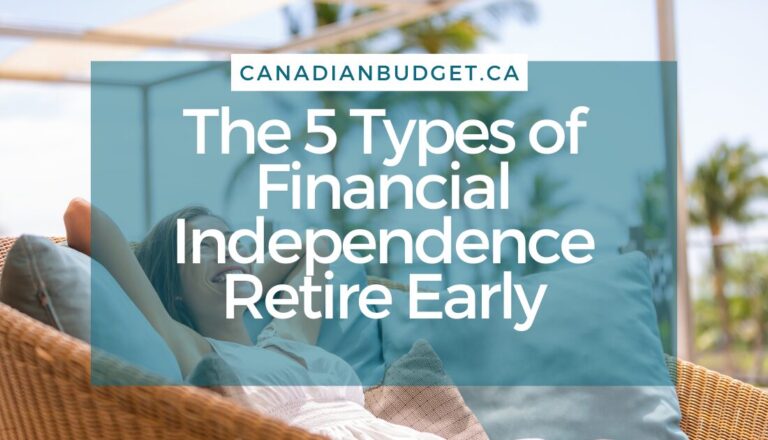
The 5 Types of Financial…
Starting your journey towards Financial Independence Retire Early (FI/RE) in Canada opens up possibilities for those eager to take control...
Read More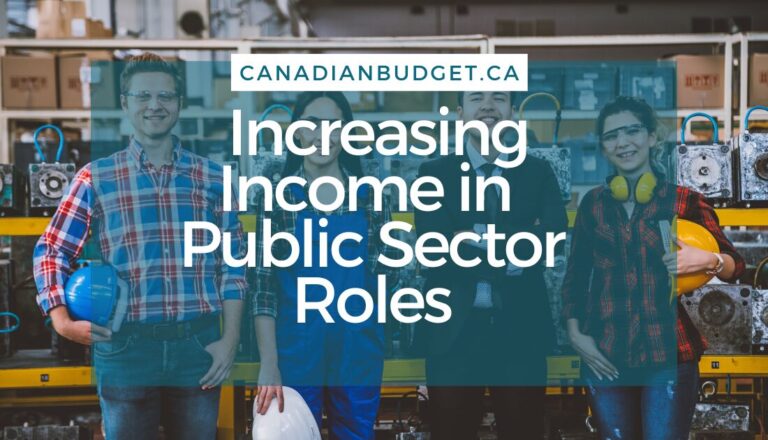
In a Public Sector role?…
Public sector roles, including those in schools and hospitals, make up approximately 21% of employment in Canada. That includes teachers...
Read More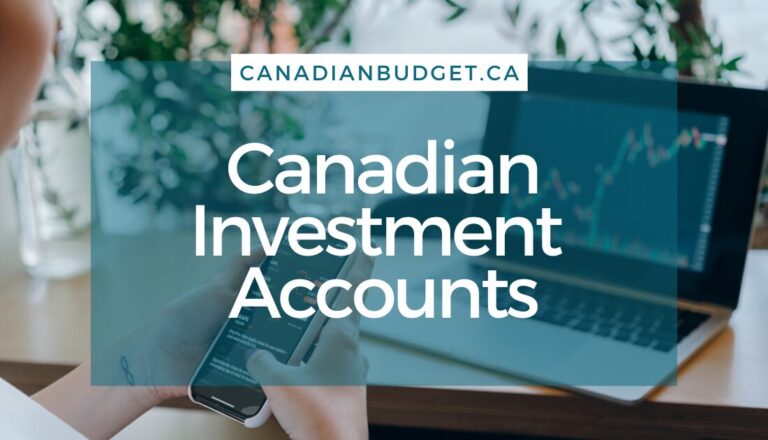
8 Canadian Investment Accounts To…
If you are new to investing, you might be wondering what the Canadian investment accounts are available, and which is...
Read More
What Are Canadian Real Estate…
Canadian Real Estate Investment Trusts: What They Are and Should You Invest? Canadians have heard owning property was the path...
Read More
6 Ways Fixing Credit Scores…
Struggling with debt can significantly impact your financial well-being, especially if your credit score suffers. Fixing credit scores is important...
Read More
The Paying Yourself First Method
Taking control of your financial future starts with a simple yet powerful concept: paying yourself first. Shifting your money mindset...
Read More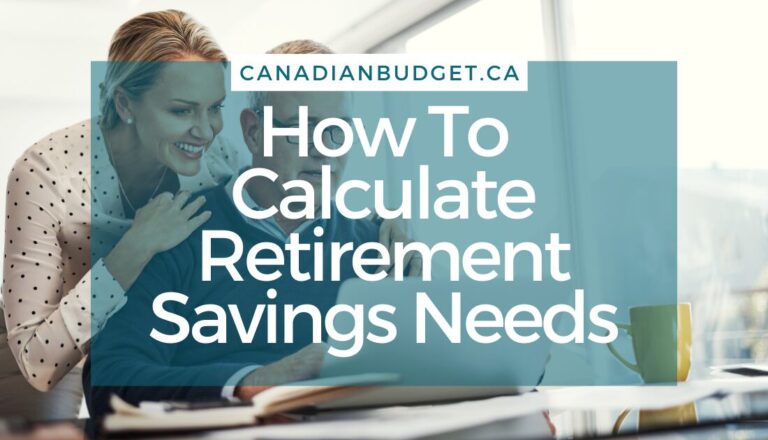
How to Calculate Retirement Savings…
When is a good time to calculate retirement savings needs? When retirement may be decades away it’s hard to think...
Read More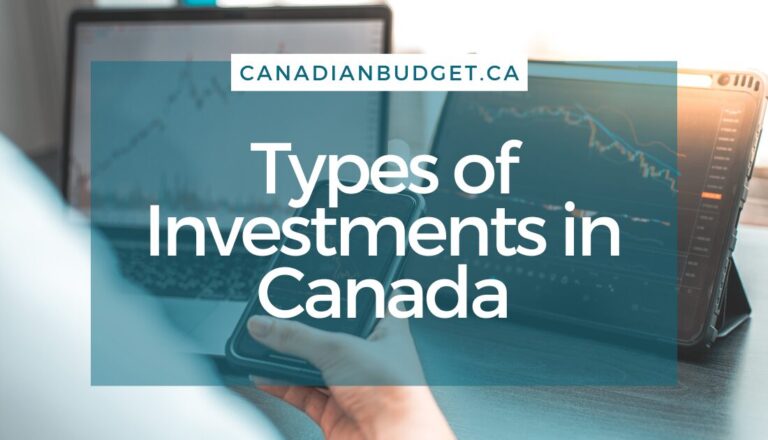
Different types of investments
There is a lot to understand about the different types of investments available in Canada. From the traditional options of...
Read MoreAbout The Author
Jessica Morgan
Jessica Morgan is the founder and CEO of Canadianbudget.ca. She is passionate about personal finance and helping Canadians improve their financial literacy by providing more Canadian focused financial content. A millennial mom of one, she has a burning obsession with all things personal finance.
Jessica has a BA in East Asian Studies from York University and a Masters in Business Administration from Toronto Metropolitan University. She is a career public sector employee with a Hybrid Pension, and an advocate for Canadian women to improve their personal finance knowledge.
Joe Curry
Joe Curry is the host of Canada’s fastest-growing retirement podcast, Your Retirement Planning Simplified. He is also the founder of RetirementPlanningSimplified.ca and Sr. Financial Planner at Matthews & Associates, a retirement planning firm located in Peterborough, ON. Joe specializes in helping retirees and people within a few years of retirement (work-optional) achieve True Wealth. Joe believes True Wealth is a combination of achieving financial freedom, spending time doing the things you love with the people you love, and having the ability to create opportunities for those that matter most.
Jessica Morgan
Jessica Morgan is the founder and CEO of Canadianbudget.ca. She is passionate about personal finance and helping Canadians improve their financial literacy by providing more Canadian focused financial content. A millennial mom of one, she has a burning obsession with all things personal finance.
Jessica has a BA in East Asian Studies from York University and a Masters in Business Administration from Toronto Metropolitan University. She is a career public sector employee with a Hybrid Pension, and an advocate for Canadian women to improve their personal finance knowledge.
Joe Curry
Joe Curry is the host of Canada’s fastest-growing retirement podcast, Your Retirement Planning Simplified. He is also the founder of RetirementPlanningSimplified.ca and Sr. Financial Planner at Matthews & Associates, a retirement planning firm located in Peterborough, ON. Joe specializes in helping retirees and people within a few years of retirement (work-optional) achieve True Wealth. Joe believes True Wealth is a combination of achieving financial freedom, spending time doing the things you love with the people you love, and having the ability to create opportunities for those that matter most.


